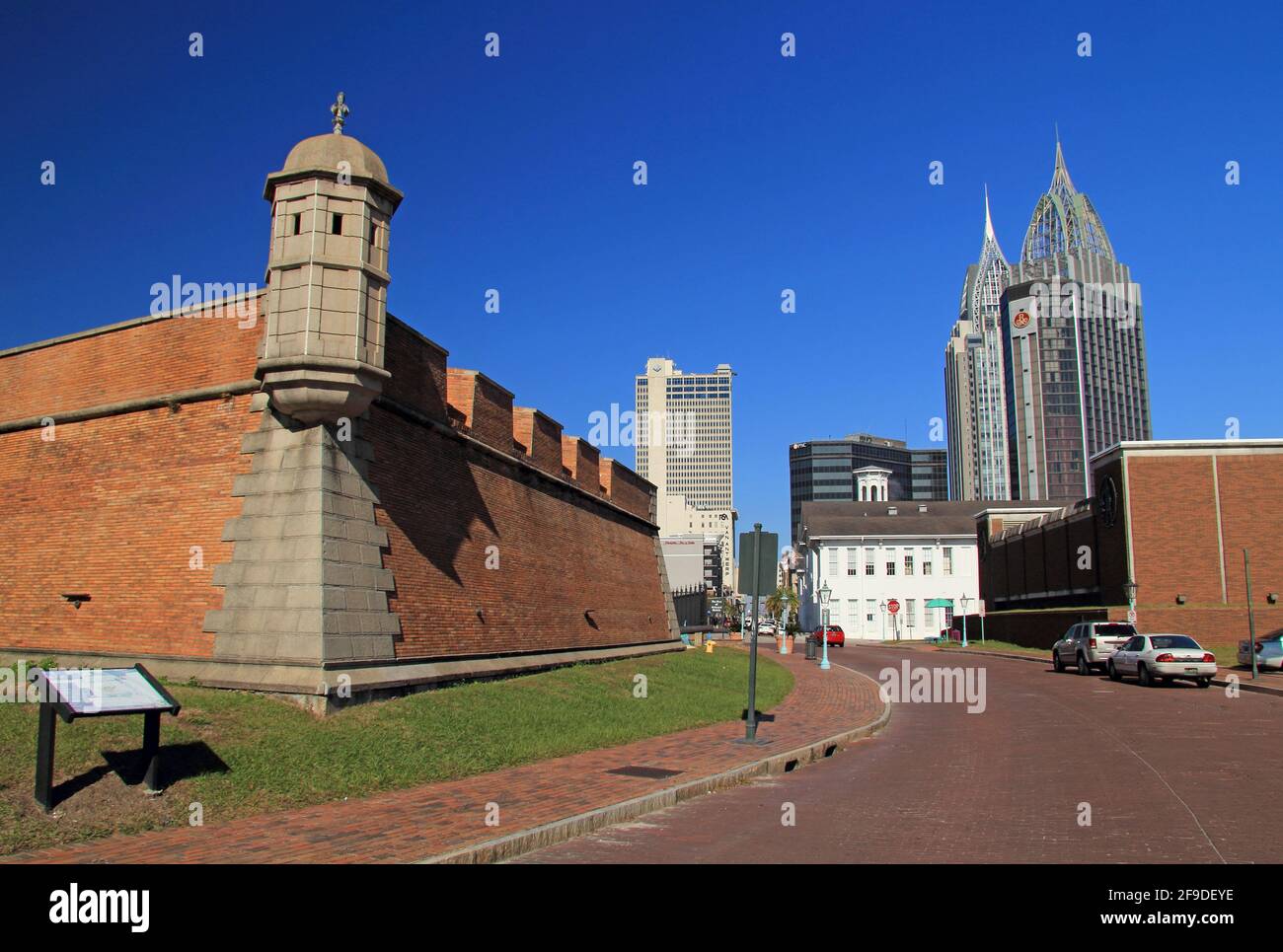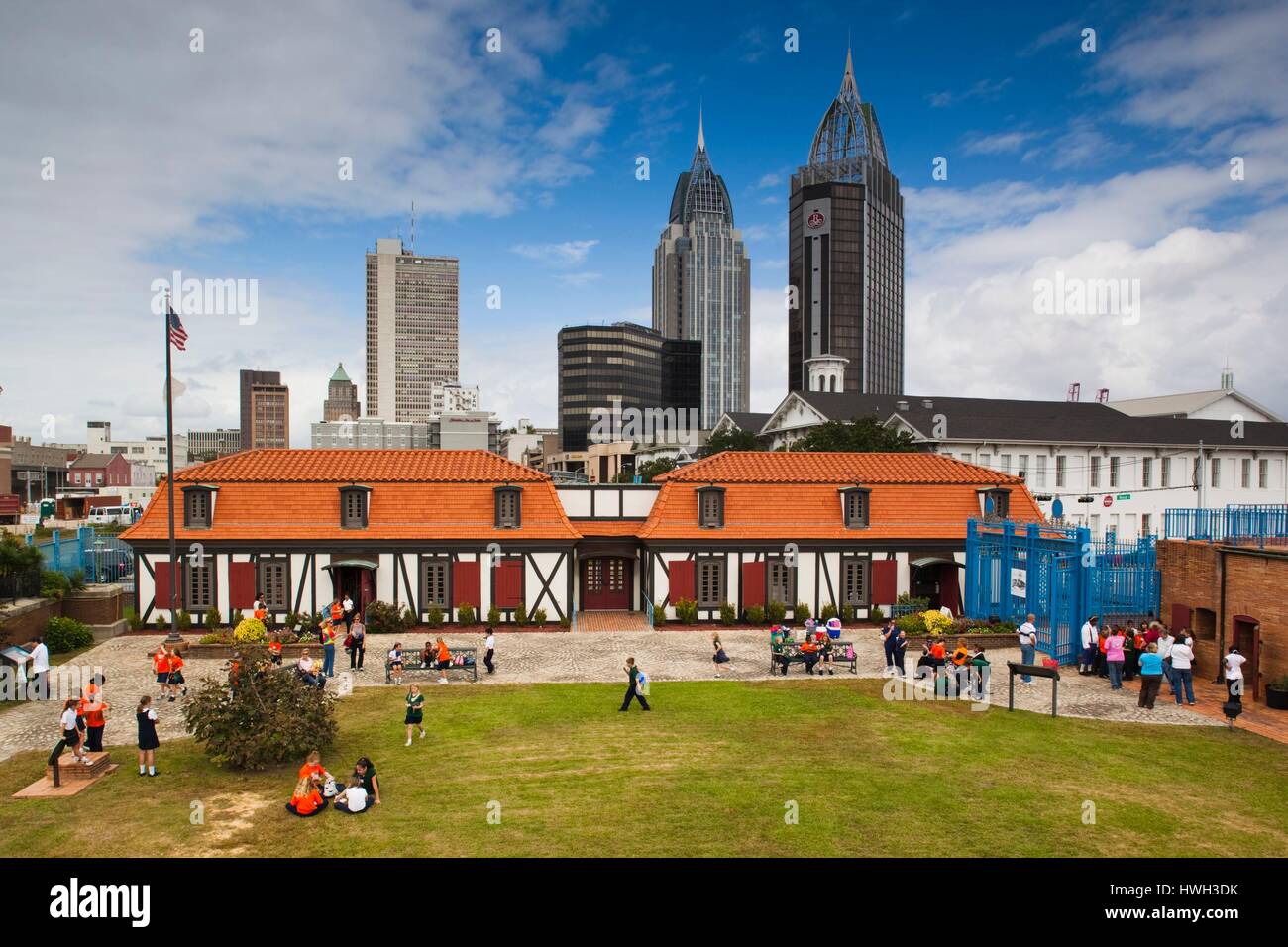
Okay, here is a 1200-word journalistic article about Fort Conde in Mobile, Alabama, incorporating historical facts and interesting details.
Echoes of Empire: The Enduring Saga of Mobile’s Fort Conde
The sun-drenched bricks of Mobile, Alabama, whisper tales of forgotten empires. Here, nestled amidst the bustling downtown, stands a structure that defies time – Fort Conde. More than just a collection of walls and bastions, this meticulously reconstructed colonial fort is a silent sentinel, guarding the layered history of a city that has lived under six different flags. It’s a physical manifestation of Mobile’s rich, tumultuous past, a gateway to understanding the strategic importance of the Gulf Coast, and a poignant reminder of the ebb and flow of global power.

For those who wander through its imposing gates today, the Fort of Colonial Mobile (as it’s officially known) offers an immersive journey back to the 18th century. But this is not merely an old ruin; it is a careful re-creation, a testament to civic pride and historical scholarship, built precisely on the original footprint of a fortification that once dominated the landscape. Its story is one of ambition, conflict, disappearance, and a remarkable resurrection, making it one of the most compelling historical sites in the American South.
The French Foundation: A Star on the Frontier
Mobile’s story began with the French. Founded in 1702 by Pierre Le Moyne d’Iberville and his brother Jean-Baptiste Le Moyne de Bienville, it served as the capital of French Louisiana for over two decades. As the colony grew, so did the need for robust defense. The original Fort Louis de la Mobile, built further upriver, proved vulnerable to flooding and too far from the open waters of Mobile Bay. A new, more formidable structure was required.
Thus, between 1723 and 1735, construction began on Fort Conde. Named in honor of Louis Henri, Duke of Bourbon and Prince of Conde, a prominent figure in the French court, this new fort was a marvel of military engineering for its time. Designed in the sophisticated star-shaped style championed by the renowned French military engineer Sébastien Le Prestre de Vauban, it featured thick brick walls, earthworks, and bastions that allowed for overlapping fields of fire, making it incredibly difficult to assault.
Strategically positioned at the confluence of the Mobile River and Mobile Bay, Fort Conde was not just a defensive stronghold; it was the beating heart of French Louisiana’s coastal operations. From its ramparts, French soldiers and colonial administrators oversaw trade with Native American tribes, managed the flow of goods and people from the Caribbean and Europe, and projected French power into the vast, contested territories of the New World.
Life within the fort’s walls was a microcosm of French colonial society. Soldiers drilled, merchants bartered, and the daily rhythms of a frontier outpost unfolded under the watchful eyes of its commanders. Disease, harsh weather, and the ever-present threat of conflict with rival European powers or indigenous tribes were constant companions. Yet, the French persevered, establishing a vibrant culture that would lay the groundwork for Mobile’s unique identity.
Shifting Flags: A British Renaming, a Spanish Conquest
The fortunes of empires, however, are rarely static. The Seven Years’ War (known in North America as the French and Indian War), a global conflict between France and Great Britain, dramatically reshaped the colonial map. France’s defeat was comprehensive, and by the Treaty of Paris in 1763, it ceded its vast Louisiana territories east of the Mississippi River, including Mobile, to the British.

With British rule came a new name: Fort Charlotte. Named in honor of Queen Charlotte, wife of King George III, the fort continued its role as a vital military outpost. The British reinforced its defenses and maintained a strong garrison, recognizing Mobile’s strategic importance as a port and a gateway to the interior. For nearly two decades, the Union Jack fluttered above its battlements.
But the winds of change were blowing once more, this time from a different direction – the American Revolution. While the main theater of war raged in the northern colonies, the conflict also spilled into the Gulf Coast. Spain, allied with France and eager to reclaim lost territories from Britain, saw an opportunity. In 1780, Spanish forces under the command of Bernardo de Gálvez, Governor of Louisiana, launched a daring campaign against British West Florida.
Gálvez, fresh from his victory at Baton Rouge, set his sights on Mobile. After a siege lasting several weeks, marked by intense cannon fire and determined resistance from the British garrison, Fort Charlotte finally capitulated on March 14, 1780. The Spanish victory was a significant blow to British power in the region and a crucial strategic gain for the American cause, diverting British resources away from the primary front.
Under Spanish rule, the fort was briefly known as Fort Carlota or Fort Carlos. The Spanish maintained their hold on Mobile for over 30 years, during which time it became a thriving port, attracting diverse populations from across the Caribbean and Europe. Their influence, particularly in architecture and place names, remains visible in Mobile to this day.
American Acquisition and Demise
The early 19th century brought yet another shift. Following the Louisiana Purchase in 1803, the United States began to assert its claims over territories previously held by European powers. Although Mobile was not part of the Louisiana Purchase, the War of 1812 provided the impetus for American expansion into the region. In 1813, American forces captured Mobile from the Spanish, making it permanently part of the United States.
With American control, the venerable fort, now almost a century old, began to lose its strategic relevance. Larger, more modern coastal defenses were being planned further down Mobile Bay, and the urban growth of Mobile itself started to encroach upon the fort’s grounds. Its sturdy walls, once symbols of strength, became obstacles to progress.
By the 1820s, the decision was made to dismantle Fort Conde. Its bricks and stones were repurposed for new construction projects in the burgeoning city, and its earthworks were leveled. Slowly, inexorably, the fort disappeared beneath layers of urban development, its memory fading into the city’s collective consciousness. For over 150 years, it lay buried, a forgotten chapter beneath the streets of Mobile.
A Remarkable Resurrection: The Fort of Colonial Mobile
The story of Fort Conde might have ended there, relegated to dusty historical archives, were it not for a confluence of factors in the mid-20th century. As the United States approached its Bicentennial in 1976, there was a national surge in historical preservation and a desire to connect with the nation’s origins. In Mobile, this sentiment combined with an ambitious urban renewal project and a growing appreciation for the city’s unique colonial heritage.
Archaeological investigations in the 1960s and 70s began to uncover tantalizing evidence of the fort’s original foundations. Researchers pored over old maps, colonial documents, and architectural plans. The vision emerged: to reconstruct a significant portion of Fort Conde, not merely as a monument, but as a living museum, an educational tool, and a vibrant tourist attraction.
The undertaking was monumental. Situated on a busy city block, directly on the path of a proposed interstate connector, the reconstruction required careful planning and significant investment. The decision was made to rebuild approximately one-third of the original fort to its 1735 specifications, using original plans where available and incorporating archaeological findings to ensure authenticity.
Opened to the public in time for the 1976 Bicentennial, the reconstructed Fort Conde was an instant success. It presented a tangible link to Mobile’s colonial past, allowing visitors to step back in time and experience the scale and design of an 18th-century military outpost. The project quickly became a cornerstone of Mobile’s historical tourism and a point of immense civic pride.
Fort Conde Today: A Gateway to Generations
Today, the Fort of Colonial Mobile stands proudly, its star-shaped bastions and sturdy walls a striking contrast to the modern buildings that surround it. It serves as Mobile’s official Welcome Center, greeting visitors with a warm Southern hospitality that is itself a legacy of its diverse past. But beyond its function as a tourist hub, the fort is a dynamic educational institution.
Inside its meticulously reconstructed walls, visitors can explore exhibits detailing the lives of French, British, and Spanish soldiers and settlers. Period-dressed interpreters bring history to life, demonstrating musket firing, blacksmithing, and other colonial skills. The museum showcases artifacts unearthed during the archaeological digs, offering tangible connections to the people who once walked these grounds.
Perhaps one of the most interesting aspects of Fort Conde is its partial nature. The reconstruction of only a segment of the original fort highlights the reality of urban development and the challenges of historical preservation. It forces visitors to imagine the full scale of the original structure and to ponder the layers of history that lie beneath our modern cities.
Fort Conde is more than just a historical replica; it is a symbol. It embodies Mobile’s "Six Flags" heritage – French, British, Spanish, Confederate, Alabama, and American – a testament to the city’s unique ability to absorb and integrate diverse cultural influences. It reminds us that history is not static, but a continuous narrative of conquest, adaptation, and resilience.
As the sun sets over Mobile Bay, casting long shadows across the fort’s ramparts, one can almost hear the echoes of French commands, the crackle of British muskets, and the stirring calls of Spanish trumpets. Fort Conde stands as a silent sentinel, a guardian of memory, ensuring that the saga of Mobile’s colonial past continues to resonate for generations to come, inviting all who pass through its gates to remember the empires that once dreamed on these shores.


